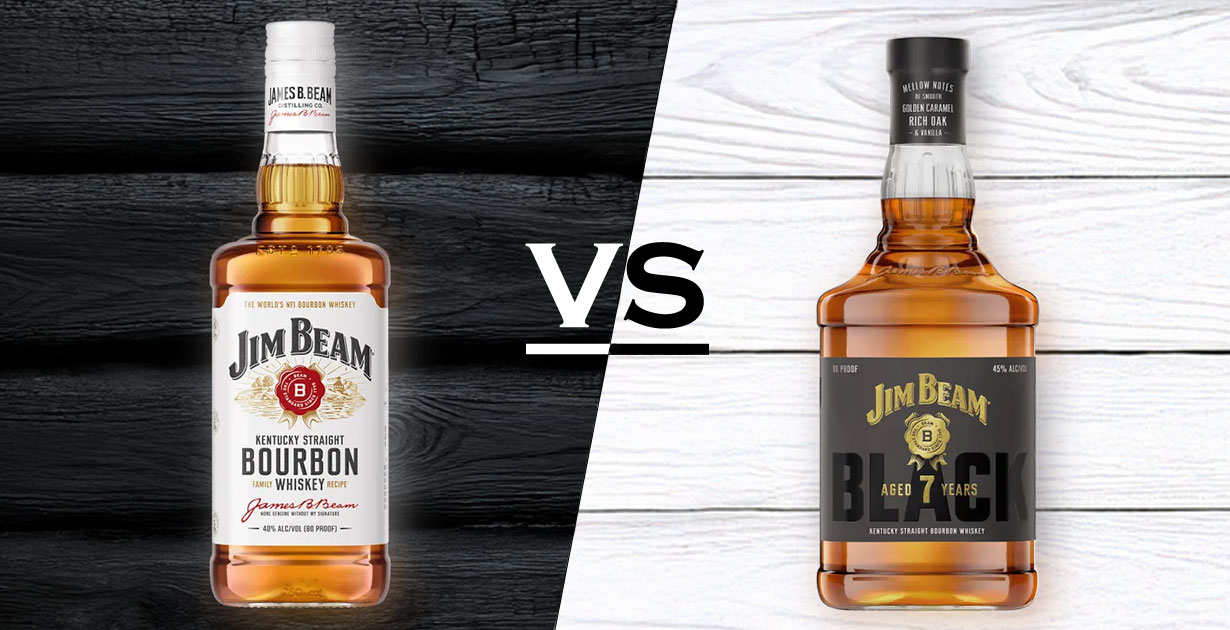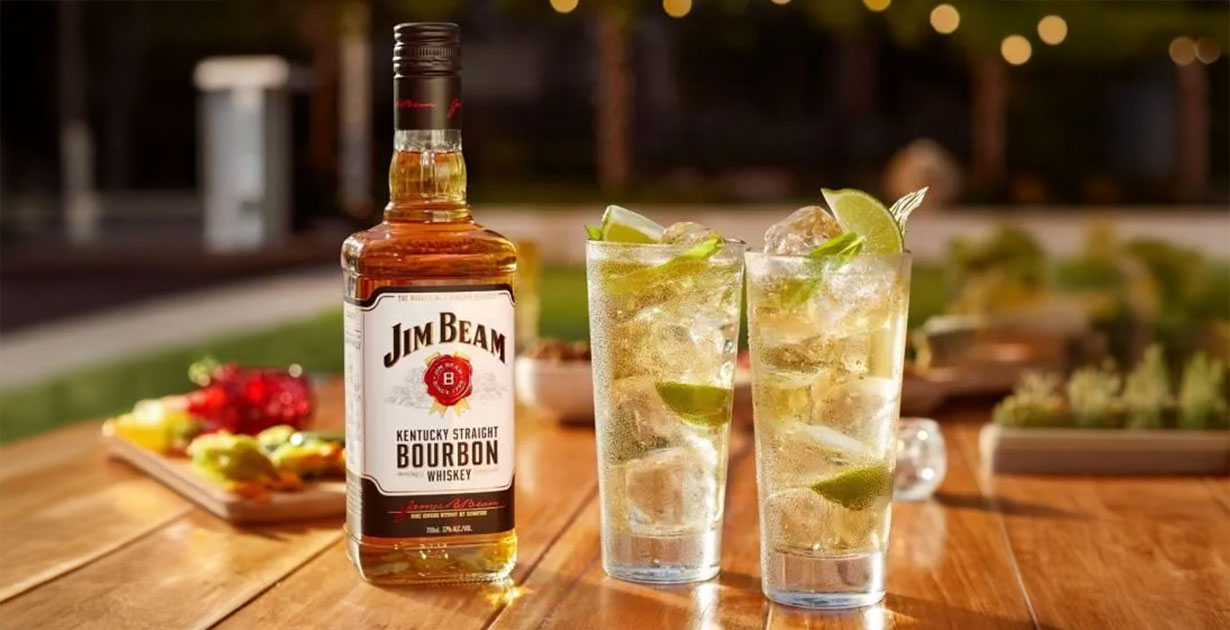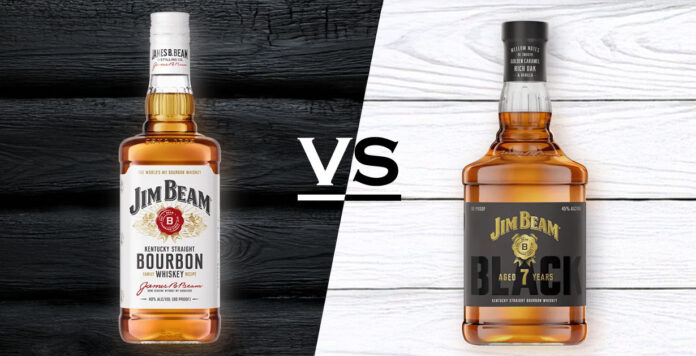
Few names in the world of bourbon are as instantly recognizable as Jim Beam. A staple of American whiskey for over two centuries, Jim Beam has built its reputation on accessibility, consistency, and tradition. At the heart of its range are two core expressions: Jim Beam White, the flagship bourbon found in bars and home collections worldwide, and Jim Beam Black, a longer-aged, slightly higher-proof alternative.
Both share the same mash bill and distillation process, but differences in aging and proof create distinct profiles. So, does the added time in the barrel and slightly higher price tag make Jim Beam Black a worthy upgrade?
How Are The Different Jim Beams Made?
At their core, Jim Beam White and Jim Beam Black share the same DNA. Both bourbons are made from Jim Beam’s traditional mash bill, distilled and aged in new, charred American oak barrels. However, their differences in aging and proof set them apart in terms of character and overall experience.
Aged four years, Jim Beam White balances sweetness and spice while keeping a lighter body. Bottled at 40% ABV, it’s positioned as an approachable, entry-level bourbon, widely available at an affordable price point. While its MSRP hovers around $20, it can often be found for as little as $12, making it one of the most budget-friendly straight bourbons on the market.
Jim Beam Black, on the other hand, offers a more mature alternative. Recently re-released with a 7-year age statement, Jim Beam Black reinforces its position as a refined Beam offering. At 45% ABV, it also delivers a slightly higher proof. Despite these upgrades, its MSRP at re-release was $24.99, but savvy shoppers can often find it for as low as $19.
Tasting Notes: Side-by-Side Comparison
While Jim Beam White and Jim Beam Black share the same core bourbon characteristics, their differences in aging and proof create distinct drinking experiences.
Jim Beam White Official Tasting Notes
- Aroma: Oaky vanilla with a spicy backdrop.
- Flavor: Medium-bodied with mellow hints of caramel and vanilla.
My Assessment:
Jim Beam White delivers classic bourbon flavors—vanilla, caramel, and spice. Though light in texture, it still offers plenty on the palate. The finish is very sweet, and longer than I would expect for a 40% ABV whiskey. While perfectly sippable neat, I personally enjoy it more in a cocktail, where its spice and sweetness hold up well against mixers.


Jim Beam Black Official Tasting Notes
- Aroma: Charred oak with notes of brown sweets and vanilla.
- Flavor: Full-bodied with rich caramel and hints of baking spice.
My Assessment:
Jim Beam Black feels like the older, wiser sibling of Jim Beam White. With almost double the age, this bourbon has had more time to develop complexity and harmonize with the oak. The vanilla and caramel notes are deeper and more pronounced, and the oak is much more noticeable, while the texture is noticeably richer. The extra 5% ABV also gives it more weight on the palate. The finish lingers longer, with a well-balanced blend of spice, oak, and sweetness that elevates it above its younger counterpart.
Value For Money & Best Uses
Both Jim Beam White and Black offer great value, catering to different drinking styles.
Jim Beam White
- Budget-friendly and widely available.
- Best for mixing in cocktails (e.g., Old Fashioned, Whiskey Sour).
- Decent for casual sipping but lacks complexity.
Jim Beam Black
- Slightly more expensive but offers a more refined experience.
- Suitable for sipping neat or on the rocks.
- Still great for cocktails but adds more depth, especially in spirit-forward drinks like a Manhattan.


Jim Beam Black vs White: The Verdict
If you prefer a smoother, richer bourbon, Jim Beam Black is worth the upgrade. The extra aging and higher proof give it more depth, making it a better choice for sipping. However, if you’re primarily using bourbon for cocktails, the upgrade may not be necessary, as Jim Beam White blends effortlessly into mixed drinks.
Jim Beam White is the quintessential entry-level bourbon for a reason. It’s easy-drinking, with approachable caramel and vanilla notes that don’t overwhelm the palate with complexity. It’s an excellent mixing bourbon and ideal for those just starting their bourbon journey or longtime JB loyalists who appreciate its consistency.
Jim Beam Black, meanwhile, is White but elevated—richer, smoother, and better suited to more seasoned palates when enjoyed neat. That said, as Fred and Freddie Noe have called it, “the Swiss Army knife of bourbons,” it still works beautifully in cocktails, bringing an extra layer of depth to classic drinks.
With only a $5 price difference, you really can’t go wrong with Jim Beam Black. If you’re looking to refine your bourbon experience, definitely go for it—it delivers an impressive balance of quality and affordability. Jim Beam has long been known for making great bourbon accessible, and that tradition continues. Jim Beam White remains the world’s #1 bourbon for a reason, but if you have a more refined palate, just don’t expect layers upon layers of complexity.

